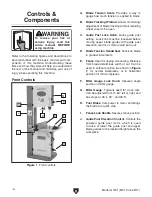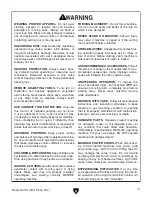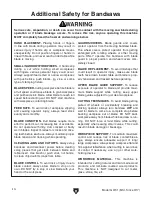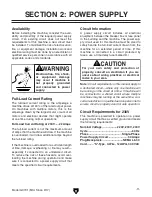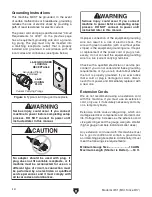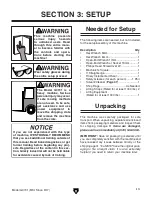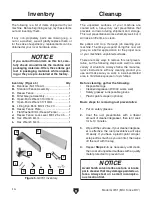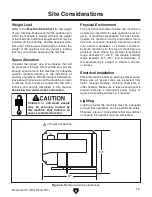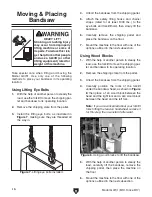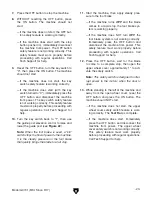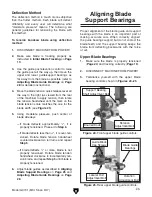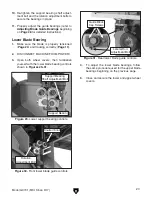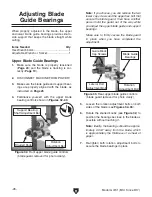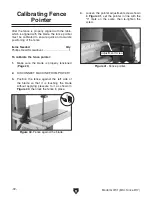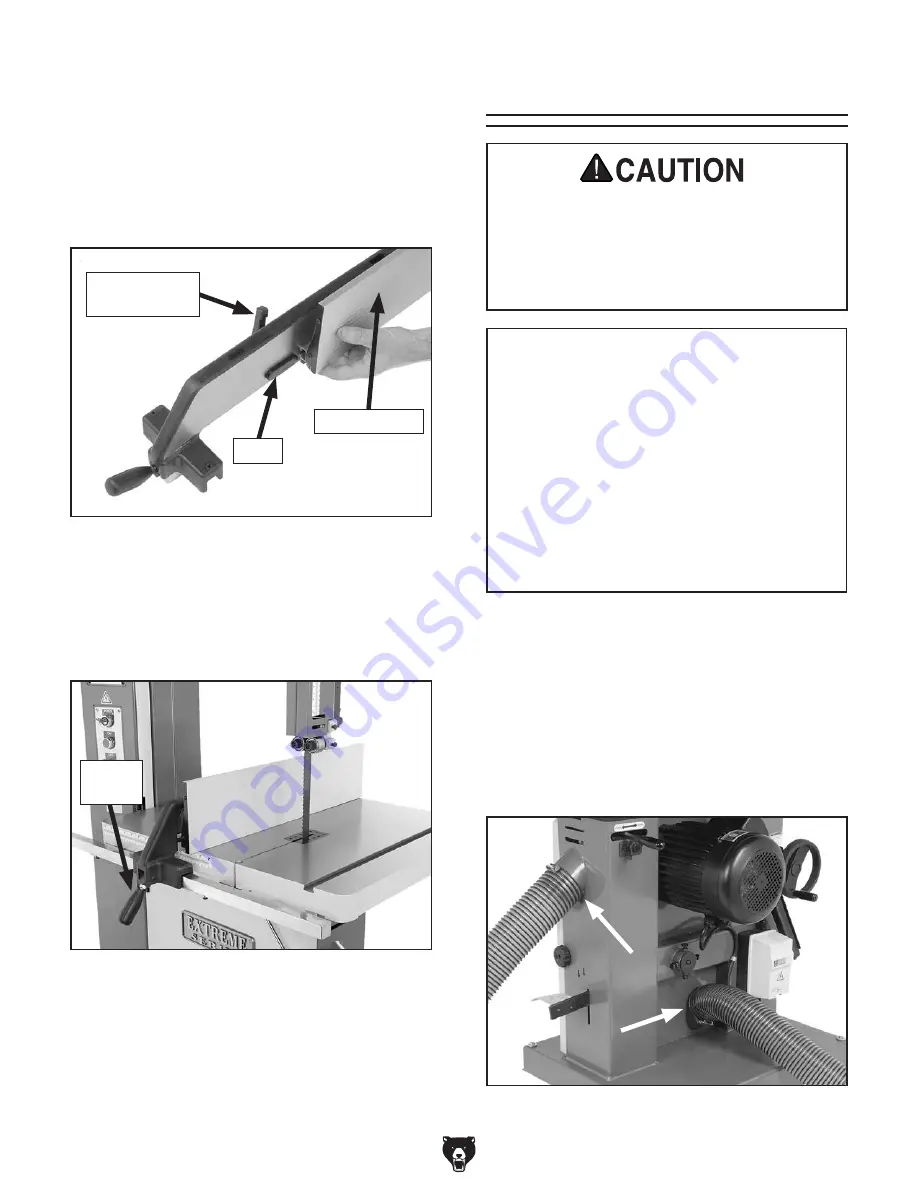
-18-
Model G0701 (Mfd. Since 9/17)
3. Slide the 8mm flat washer onto the resaw
fence lock lever, then insert the assembly
through the standard fence (see
Figure 11).
4. Thread the T-bar onto the lock lever a couple
of turns, align the resaw fence slot and the
T-bar, then slide the resaw fence fully onto
the standard fence, as shown in
Figure 11.
Figure 11. Resaw fence components.
Lock Lever
& Flat Washer
T-Bar
Resaw Fence
5. Tighten the lock lever to secure the resaw
fence in position.
6. Pull the fence handle up, then place the fence
on the fence rail, as shown in
Figure 12.
Figure 12. Fence assembly mounted on the
fence rail.
Fence
Handle
7. To secure the fence in place, push down on
the fence handle.
Dust Collection
To connect a dust collection hose:
1. Fit a 4" dust hose over each dust port, as
shown in
Figure 13, then secure them in
place with hose clamps.
2. Tug the hoses to make sure they do not
come off.
Note: A tight fit is necessary for
proper performance.
DO NOT operate the Model G0701 without an
adequate dust collection system. This saw
creates substantial amounts of wood dust
while operating. Failure to use a dust collec-
tion system can result in short and long-term
respiratory illness.
Recommended CFM
At Each Dust Port: 400 CFM
Do not confuse this CFM recommendation with
the rating of the dust collector. To determine the
CFM at the dust port, you must consider these
variables: (1) CFM rating of the dust collector,
(2) hose type and length between the dust col-
lector and the machine, (3) number of branches
or wyes, and (4) amount of other open lines
throughout the system. Explaining how to cal-
culate these variables is beyond the scope of
this manual. Consult an expert or purchase a
good dust collection "how-to" book.
Figure 13. Dust hoses attached.

